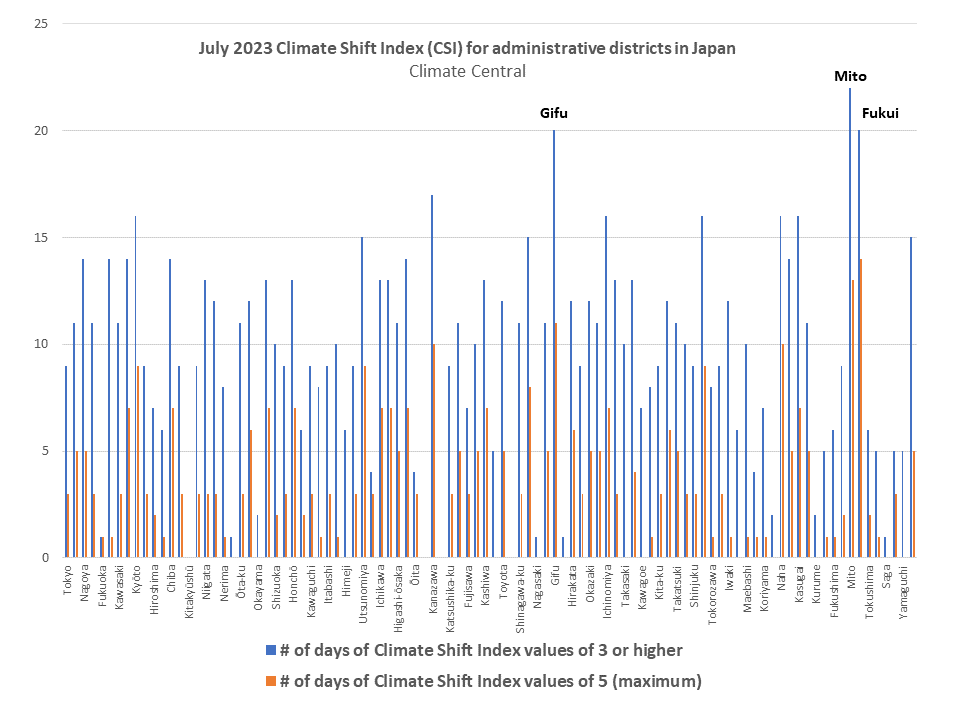Pick Up
834. Fingerprints of Climate Change in July 2023 Heat Wave

834. Fingerprints of Climate Change in July 2023 Heat Wave
July 2023 was the hottest month on record.
On August 2, Climate Central, a nonprofit organization that provides information on the science of climate change, announced that the traces of anthropogenic climate change were evident in the July heat wave, affecting 6.5 billion people, or 81% of the world's population.
Although the global average temperature is rising, people experience climate change through daily temperature changes and shifts in weather patterns in the regions where they live and do not experience the so-called "global average temperature". The Climate Shift Index (CSI), published by Climate Central, quantifies the probability that anthropogenic climate change will cause a shift in the daily temperatures experienced in the regions where people actually live. The CSI is expressed on an 11-point scale from -5 to zero to plus 5. For example, in the case of an extreme heat wave, a CSI level of 3 means that climate change has made it three times more likely to occur, while a CSI level of 5 means that it is an exceptional case that is five times or more likely to occur.
Climate Central analyzed data from July 1 to July 31, 2023 for more than 4,700 cities in 200 countries around the world.
According to the analysis, 6.5 billion people, or 81% of the world's population, experienced CSI Level 3 or higher for at least one day in July 2023, and at least 2 billion people were affected by CSI Level 3 or higher climate impacts for 31 consecutive days. Approximately 870 cities experienced CSI level 3 or higher heat waves for 25 days or more. In tropical climates in particular, even small daily changes in temperature due to climate change had a significant impact, and people living near the equator or in island nations were estimated to be particularly affected.
The report predicts that abnormal heat waves at CSI levels 1 to 5 will increase in frequency as long as humans continue to use fossil fuels.
Based on the data used in the analysis, of the 98 administrative cities analyzed in Japan, only four cities, Kitakyushu, Kurashiki, Fukuyama, and Takamatsu, did not experience any CSI level 3 or higher days. In contrast, Gifu, Fukui, and Mito experienced CSI level 3 or higher for more than 20 days, and CSI level 5 or higher for more than 10 days. Japan, like the rest of the world, seems to be entering an era in which it cannot escape the effects of global boiling.
Contributor: IIYAMA Miyuki (Information Program)
